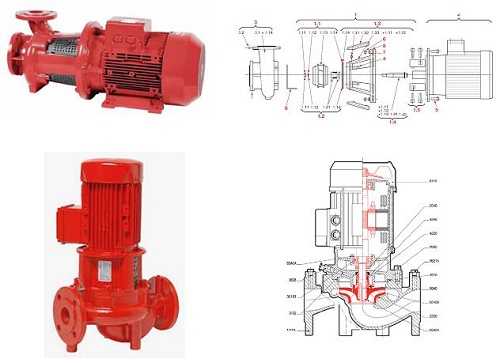For rotors we recognise:
- “wet rotor” motor pumps:
These are small and medium sized pumps called circulators or accelerators.
The rotor of these electric motors is “immersed” in the water flow which also serves to lubricate the bearings.
The advantage of this technology is that it does away with the need for a cooling fan for the motor.
This cooling is performed by the circulating water which enables very low sound levels to be obtained while limiting the risks of leaking.

“Wet rotor” pumps are generally used in individual installations or in sub-stations.
For rotors we recognise:
- « Dry rotor » pumps
The motor and the pump casing are completely separated by a sealing system of a:
- Gland seal: the sealing is achieved by a kind of compressed seal.
This basically should not be a perfect seal and requires drop by drop evacuation called dripping.
- Mechanical seal: the sealing is achieved by a device composed of a friction ring and a rotary seal. The sides are machined with extreme precision and their installation requires great care. This sealing device is totally water-tight.
The motor of a dry rotor pump is cooled by a fan fitted to the end of the drive shaft.
In the exploded view diagram below the fan provides cooling for the motor.

Dry rotor pumps are generally used in primary circuits of heating
systems where the noise aspect of the fan is less important.
Examples of dry rotor pumps

